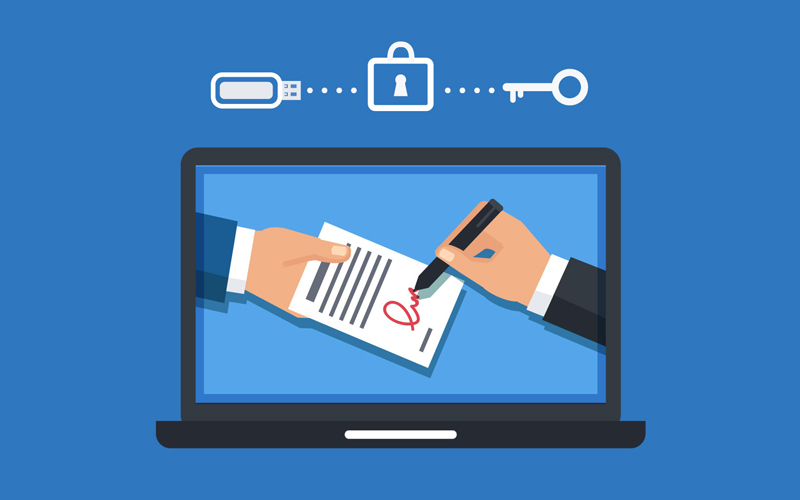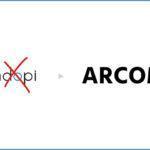By Emmanuelle Bismuth, Partner and Bertille de Bayser, associate lawyer
Containment requires, the most resistant to electronic tools could take advantage of this period as a launching pad! We have the tools to support you.
Among the existing range of electronic tools, the electronic signature and the electronic registered letter are two tools that are particularly easy to set up.
However, a certain mistrust remains intrinsically linked to the use of this type of service.
Legally, the protection resulting from the electronic form compared to the paper form has however an equivalent value.
The legal principle is clear: paper writing and electronic writing are equivalent.
France is also a pioneer in this area. It legislated in favor of electronic writing long before European legislation took hold of this subject.
Article 1366 of the Civil Code provides that “ the electronic document has the same probative force as the written document on paper, provided that the person from whom it emanates can be duly identified and that it is drawn up and kept in conditions such as to guarantee its integrity ».
Media - paper or electronic - therefore benefit from a presumption of reliability and integrity, which can be reversed.
In the event of a written document, it suffices to disavow his signature so that his opponent must establish its veracity.
In the case of electronic writing, the electronic signature makes it possible to presume the reliability of the document. An increasingly favorable case law grows when one relies on an electronic certification service provider (PSCE) and one has a valid mechanism for managing the evidence.
It is thus saving to break away from the mistrust linked to the use of the electronic signature or the electronic registered letter which can be outdated today.
ELECTRONIC SIGNATURE
We still note reluctance due to a lack of knowledge of existing solutions. The health crisis we are experiencing, however, offers an opportunity to develop electronic signatures.
LBOs and private equity transactions are becoming digitized with a relaxation of the position of lenders whose internal rules did not allow them to be used until now.
This was also authorized by a decree of April 4, 2020 for notarial deeds in place of the physical presence of the signatory.
The reliability of the electronic signature has been recognized in French law since the law of March 13, 2000 (Law n ° 200-230, transposition of the European directive of January 19, 2000).
Its reliability has been established by the following texts:
- the new article 1367 of the civil code (introduced by ordinance n ° 2016-131 of February 10, 2016)
- the Council of Europe regulation of 23 July 2014 (European regulation 910/2014 on electronic identification and trust services for electronic transactions in the internal market (EIDAS Regulation)) which harmonizes the electronic signature in Europe
- a decree of September 28, 2017 (decree 2017-1416) who transposed it into French law, specified the conditions of validity of the electronic signature.
French law has thus defined the presumption of reliability of the electronic signature:
“(…) The use of a reliable identification process guaranteeing its link with the act to which it is attached. The reliability of this process is presumed, until proof to the contrary, when the electronic signature is created, the identity of the signatory assured and the integrity of the document guaranteed, under conditions set by decree of the Council of State; "
that is to say thatit will be up to whoever disputes this signature to prove that it is not valid.
The eIDAS Regulation (article 25) provides that the legal effect of a qualified electronic signature is equivalent to that of a handwritten signature .
He defined three levels of signature:
- The simple signature consists for example of the digitization of the paper signature or the fact of digitally checking a box;
- Advanced signature, which requires the signature to be uniquely linked to the signer, allowing others to identify it;
- The qualified electronic signature which is based on a qualified certificate for electronic signature.
These last two signatures require the use of a qualified trusted third party.
The three types of signatures (simple, advanced and qualified) have a legal value being admissible as evidence in a court judgment.
From a practical point of view :
- The National Bar Council (CNB) provides lawyers (in a secure manner) with a tool allowing them to electronically sign fee agreements e) fee agreement and legal acts e) legal act ;
- Many providers such as Docusign, Yousign, Adobe solution, Deep Block also offer advanced and qualified electronic signature solutions. We currently practice electronic signature (Docusign) and it is proving to be a practical and reliable tool both for us and for our clients.
The intermediate version offered by Docusign allows double authentication of each signatory by SMS and by email. For this, the drafting lawyer completes the information and downloads the documents. The parties thus receive the link which will allow them to read and sign the documents.
The signatures will be time-stamped, so make sure that the documents are signed in the correct order by giving clear and precise instructions to the parties (ie credit agreement signed before the security documents).
For each signature, a proof file is automatically created in order to certify the identity of the signatory and the smooth running of the procedure.
These tools allow the simultaneous signature by several parties of one or more acts quickly and efficiently without the need to meet physically.
THE RECOMMENDED ELECTRONIC LETTER
The registered letter with acknowledgment of receipt (LRAR) is very commonly used in business life, as in private life, whether to give notice to a co-contracting party or to terminate a lease contract.
From a legal point of view, the LRAR allows in particular to:
- formalize a situation;
- proving that information has been provided is a means of proof;
- date the delivery of the information and thus run certain legal deadlines.
Since 2005, the possibility of sending registered mail electronically has been provided for by article 1369-8 of the Civil Code. However, its use remains marginal.
However, the electronic registered letter brings many advantages, such as:
- Lower shipping cost;
- A service available 24 hours a day, 24 days a week;
- An ecological approach;
- Digitization of processes.
Since 2016, the law specifies very clearly: “ Electronic registered mail is equivalent to sending by registered letter ”(Art. L.100 of the Postal and Electronic Communication Code).
The electronic registered letter is therefore perfectly valid legally.
Two conditions must be met:
- The non-professional recipient must have expressed his consent to receive electronic registered items:
This consent may have been expressed in the contract in the "notices" clause.
Otherwise, the so-called “hybrid” electronic registered letter (see below) overcomes this difficulty.
- The process of sending an electronic registered letter must be carried out by a "qualified service provider":
The “qualified” service provider is the service provider who has received the security visa from the National Information Systems Security Agency (known as “ANSSI”) guaranteeing that the electronic registered mailing service meets legal requirements.
La list of qualified providers is kept up to date by ANSSI. It currently has 7 qualified service providers, namely:
-
- AR24, product named " AR24 ";
- Clearbus, product named " Recommended Clearbus electronics ";
- Darva, product named " Orea ";
- Equisign, product named " LetReco ";
- Le Groupe La Poste, a product named " THE Electronic Registered Letter ";
- Majorel, product named " Develop ";
- Tessi Documents Services, product named " Tessi Post LRE ».
In practice, it is possible to use two distinct types of registered mail:
- A so-called “hybrid” shipment: the shipment is sent by email by the sender, the qualified service provider prints the shipment that he delivers in hard copy to the recipient;
- A 100% dematerialized shipment: the shipment is sent by email by the sender, the recipient receives an email notifying him that an electronic registered letter has been sent to him, after acceptance the service provider gives him access to the registered letter.
The AR24 service offers 100% dematerialized LRAR. The identification of the sender is made easier for lawyers holding an identification key (it is used in particular to connect lawyers to the Virtual Private Lawyer Network - known as RPVA - allowing them to exchange securely with the courts) .
The 100% dematerialized sending process takes place as follows:

The service provider has the obligation to keep all proof of deposits for at least one year. This aspect is a criterion for differentiating existing offers. The longer the retention period for evidence offered by the service provider, the greater the legal certainty.
To our knowledge, the electronic LRAR has not been the subject of any court decision.
Nonetheless, the most likely litigation would relate to the electronic LRAR as a means of evidence. However, as long as the electronic LRAR has been sent via a qualified service provider holding the ANSSI visa, this means of proof is a priori assured. It is simply necessary to keep the electronic acknowledgment.
We can bet that it is easier to keep such a document when it is electronic than when it is made up of carbon paper.

Emmanuelle Bismuth
Partner
Her fifteen years of experience in the banking and real estate departments of internationally renowned law firms has enabled her to acquire a practical expert in international finance operations and internal of real estate transactions.
Her practice and experience lead her to also advises in the area of debt restructuring (real estate developers, industrial groups, services and agribusiness).





